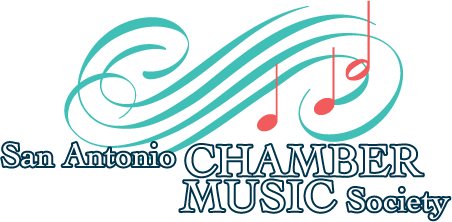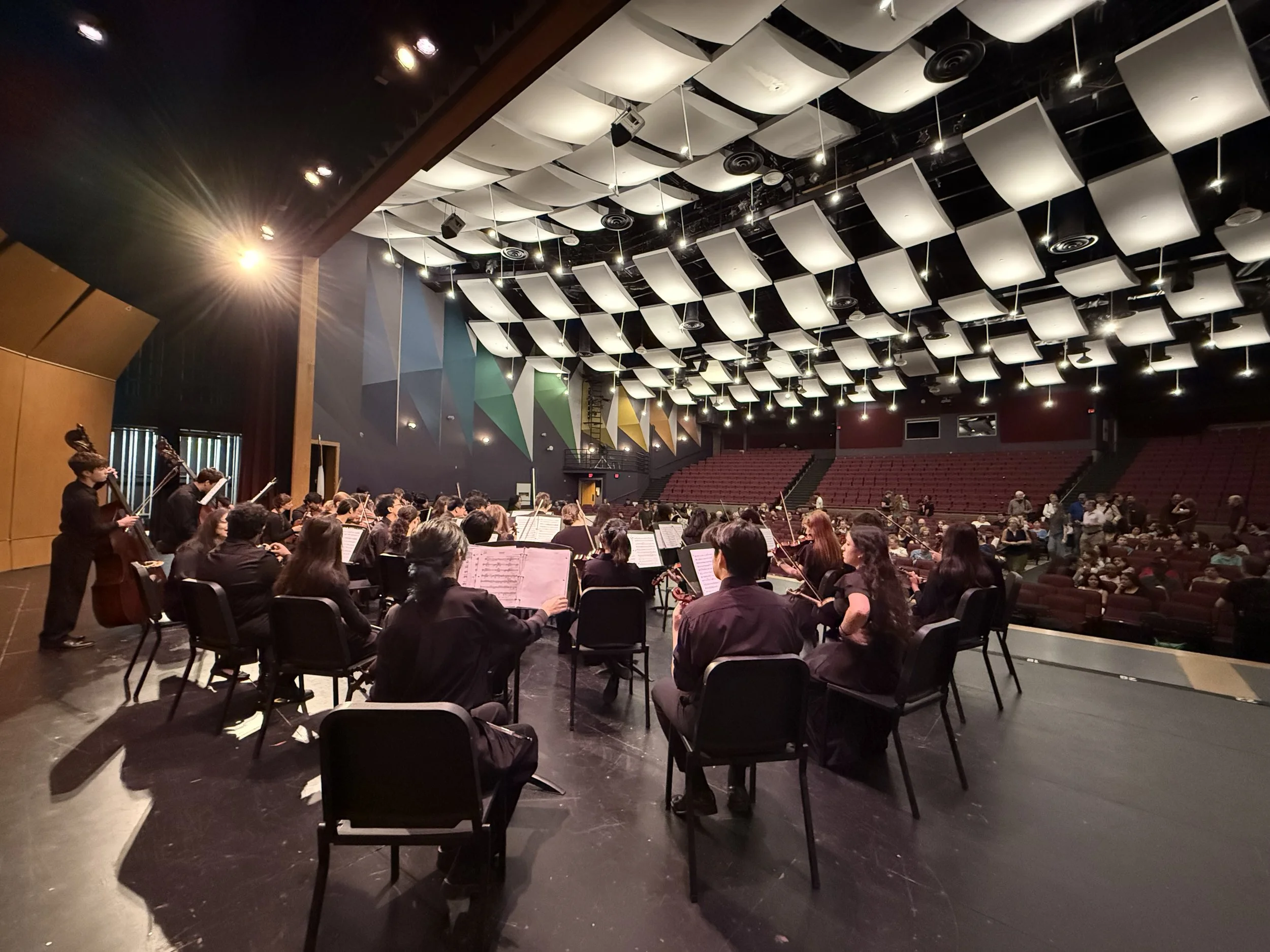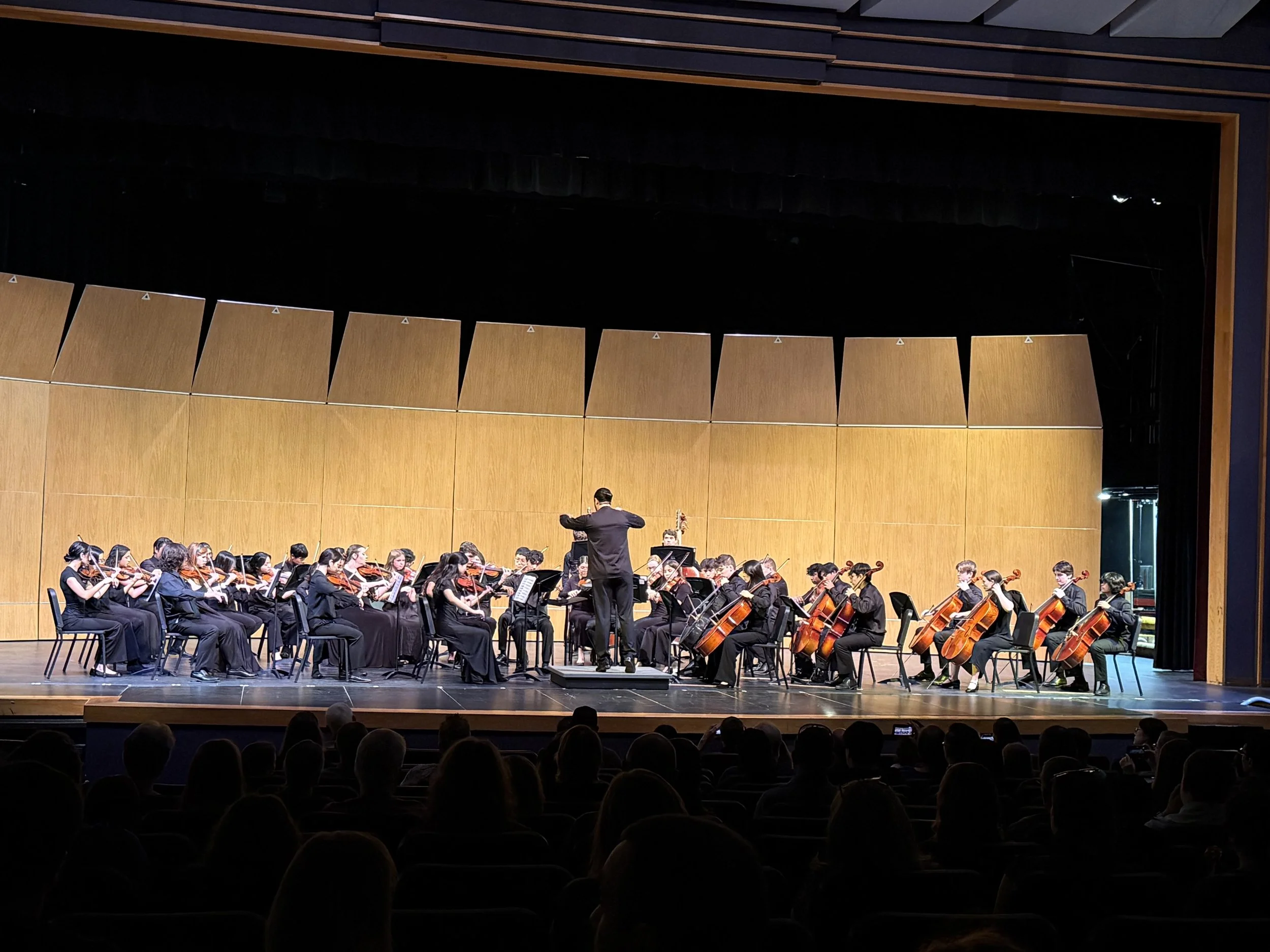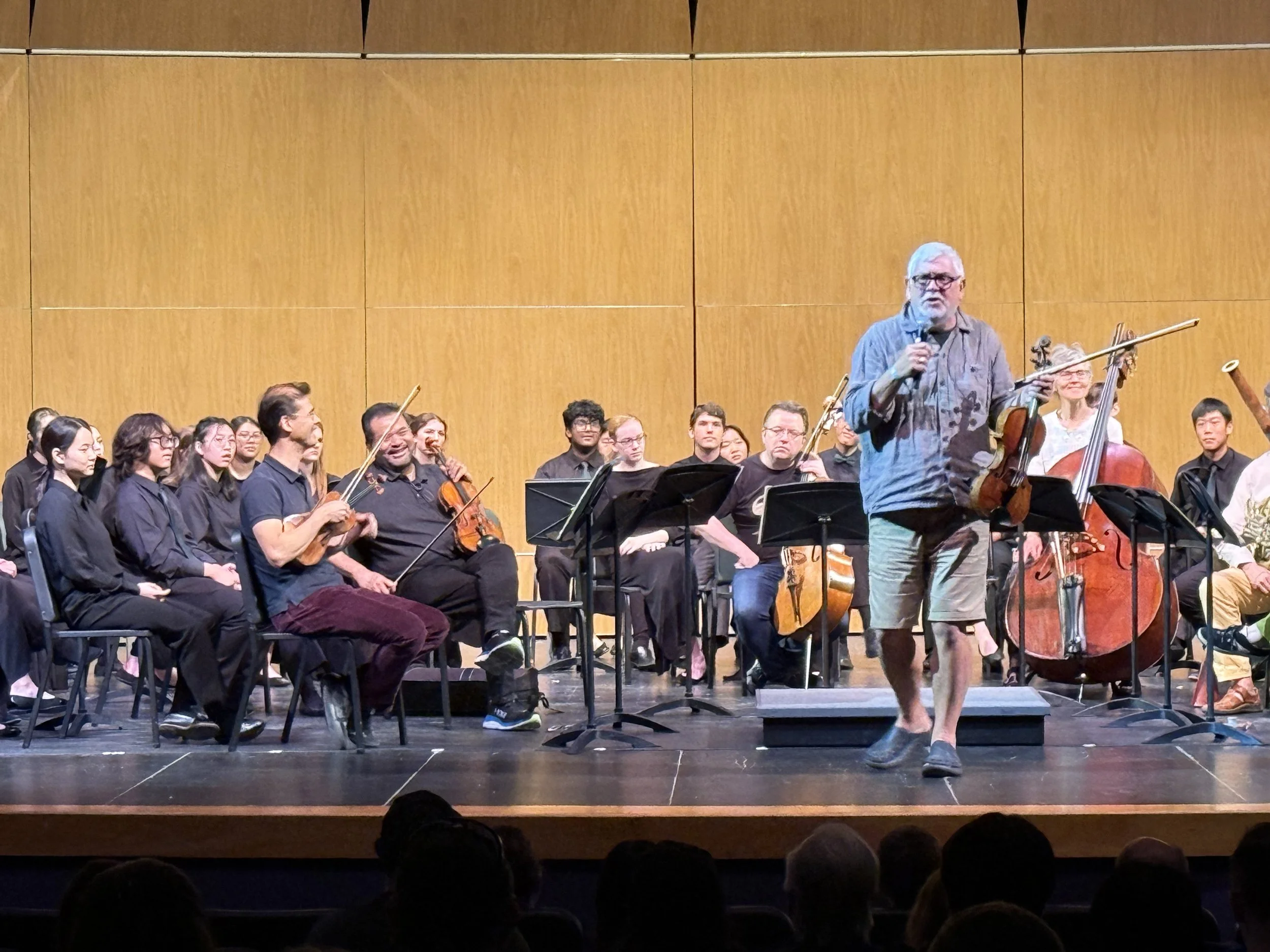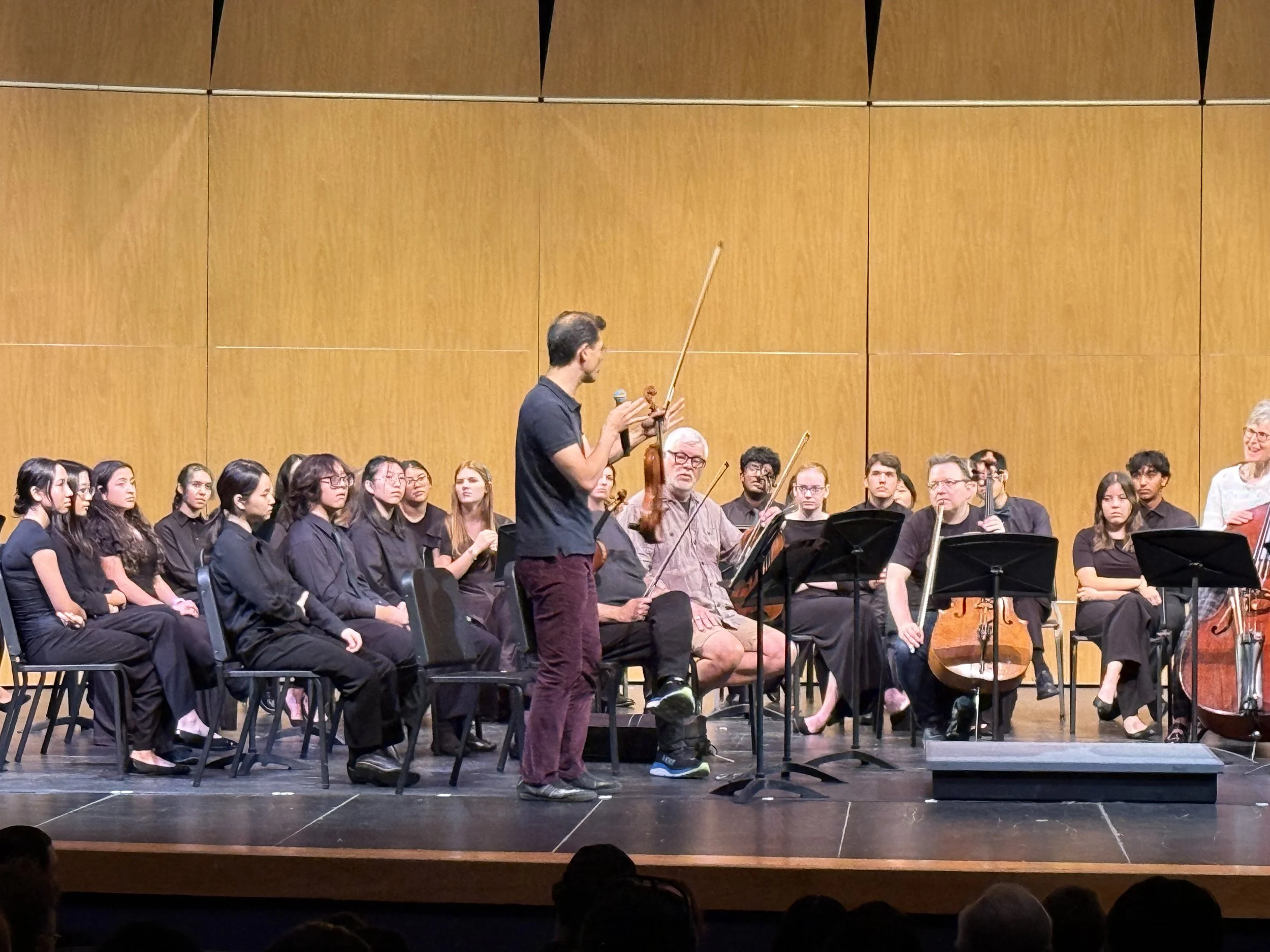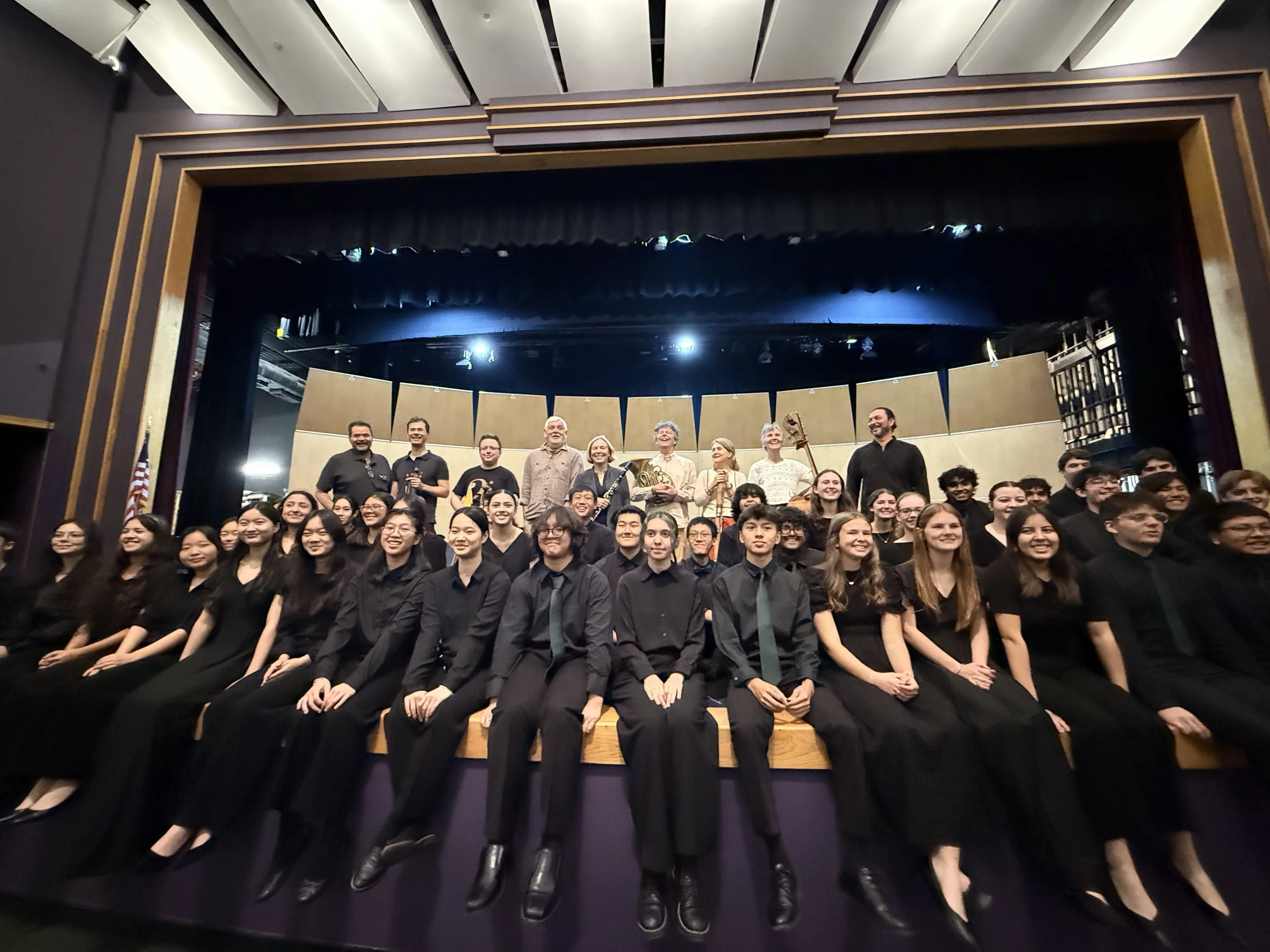Outreach event with the Academy of St Martin in the Fields Chamber Ensemble at Ronald Reagan High School, October 13, 2025
On Monday morning, October 13, the Reagan High School auditorium was filled with a surprising amount of anticipation. With school out for Columbus Day, students, families, and community members packed the hall for the rare opportunity of experiencing a live masterclass with members of the world-renowned Academy of St Martin in the Fields Chamber Ensemble. The audience of roughly 250 included about 50 students from the Reagan Chamber String Orchestra, their director Sixto Elizondo and his assistant director Nathan Sharplin, string educators, YOSA students and staff, family and friends of students, and SACMS supporters.
Long-time SACMS Board Member and past President Randy Glickman opened the event with a warm introduction, sharing a brief history of the ensemble’s global prestige and reminding students that SACMS concerts are always free. His enthusiasm set the tone for this special occasion before the Reagan Chamber Orchestra, led by Mr. Elizondo, began with Jessie Montgomery’s Strum. For a little context, Montgomery’s music often blends classical and folk traditions, even drawing on other genres like spirituals, jazz, R&B, and hip-hop and weaving them into her compositions. Strum plays with textures, layers, and dialogue between sections, with repeating rhythms or harmonies providing a bed of sound for melodies to dart in and out. Strumming pizzicato (plucking) figures are heard throughout. Tonally, the work carries a mix of fleeting nostalgia and eventually, celebration.
From the opening pizzicato exchanges to the full ensemble sections, the students’ playing demonstrated a remarkable level of preparation and poise. The piece’s shifting meters and rhythmically intricate sections required constant awareness and quite a lot of confident. They rose to the challenge with both precision and energy. Their collective sound was both clear and resonant, filling the hall.
The first violinist of the Academy, Tomo Keller, began the coaching session with generous praise. “You know this piece so well already,” he remarked, before encouraging the orchestra to explore the music more deeply by rehearsing in smaller chamber groups. He spoke about the power of proximity and connection in rhythmic pieces like Strum: “When you’re spread out so far, it’s much harder to feel the beat together — you end up reacting a little late.” He challenged the players not to rely solely on their section leaders for energy and direction, but to take equal responsibility for the ensemble’s rhythmic vitality.
Cellist Richard Harwood then led the bulk of the tutorial, having studied the piece in advance. Echoing Keller’s comments, he encouraged the students to convey more enjoyment and character. “Musicians are storytellers,” he said, “always presenting characters that change as the music changes.” Under his guidance, the orchestra revisited key passages, focusing on phrasing, accentuation, and balance between inner and outer voices. When the violas and second violins rehearsed their interlocking rhythms alone, Harwood asked them to listen not just for correctness, but for color and dialogue — to “zoom in” on details while also perceiving the broader shapes. The ensemble’s clarity noticeably improved. He reminded them that in ensemble playing, the anchor is always shifting: sometimes the melody leads, other times the rhythm section or bass line defines the pulse. The goal, he said, is constant awareness — deciding in each moment who to follow and who to support.
After the insightful masterclass, the Academy performed the final movement of Jean Françaix’s Octet (Mouvement de valse). The students remained onstage to watch from close range — an experience that brought them visibly closer to the artistry they had just been guided by. Before they began, violist Bob Smissen received a surprise serenade of “Happy Birthday” from his colleagues, to the delight of the audience. The ensuing performance was effervescent, full of wit, precision, and charm, leaving both students and parents visibly moved.
A lighthearted Q&A followed, led by Smissen, whose humor helped students open up. When no hands went up at first, he teased, “Did you catch any of our mistakes?” — eliciting laughter before the real questions began. Students asked how long the ensemble rehearses, what it’s like to perform in smaller groups, and how much they practice daily. The musicians’ answers were honest and humanizing: “Every time you don’t practice, your colleagues notice,” said Keller with a grin, emphasizing focus over sheer hours. Bassoonist Julie Price spoke eloquently about the joy of blending with string players, the shared sense of breath, and how musical training builds lifelong skills in teamwork, creativity, and critical thinking — qualities that enrich any profession.
The event concluded with heartfelt words from both sides. “Having heard you play,” said Smissen, “I can say our future is in safe hands.” Mr. Elizondo, visibly moved, expressed gratitude to SACMS and to pianist Daniel Anastasio for coordinating the outreach. “It’s been a lifelong dream,” he said, “to have the Academy of St Martin in the Fields on our stage.”
----Submitted by the Outreach Committee
